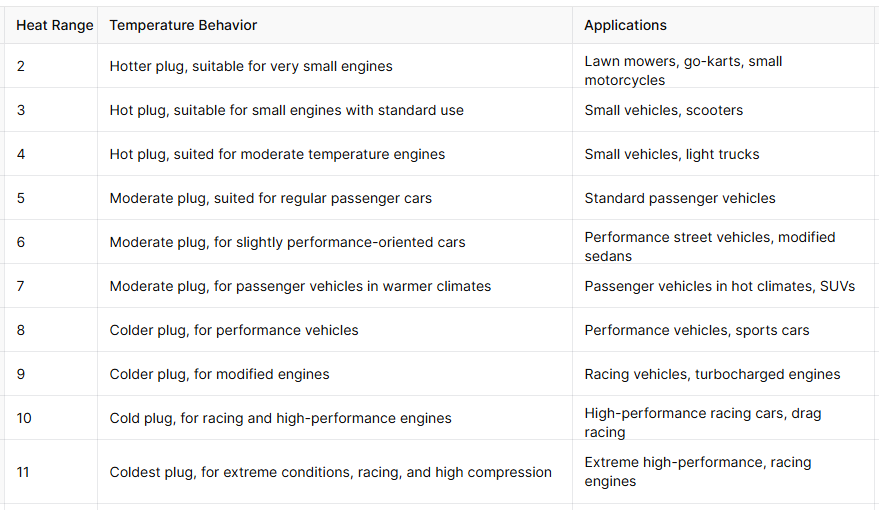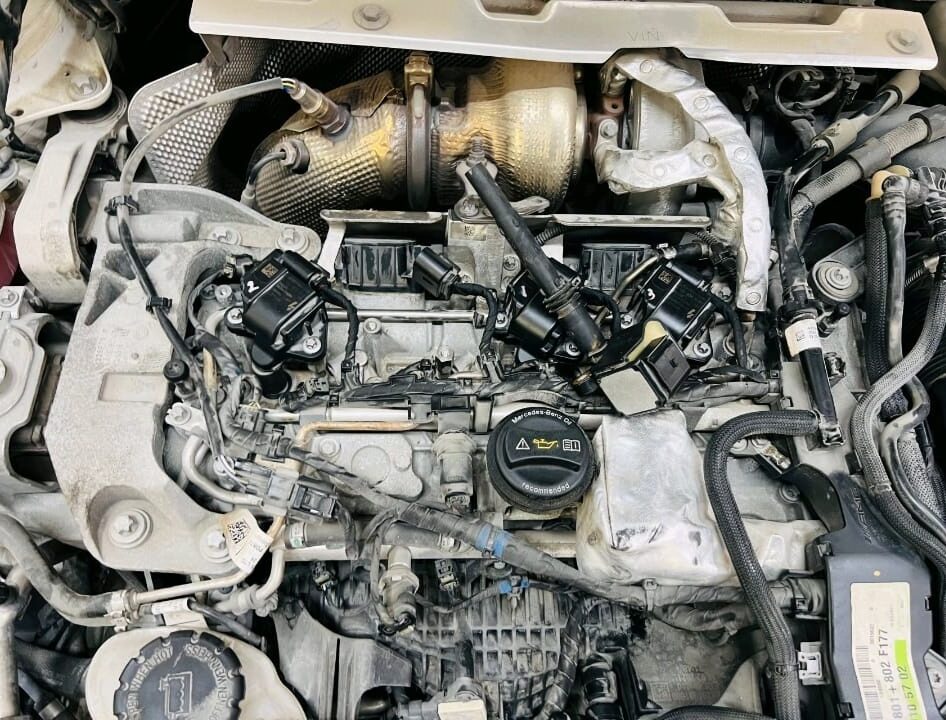NGK V-Power heat range chart helps select the right spark plug based on engine performance. Hotter plugs (lower range) are for regular use, while colder plugs (higher range) suit high-performance or modified engines.
When it comes to maintaining engine efficiency and performance, choosing the correct spark plug is essential. One of the most trusted brands in the automotive world for spark plugs is NGK, especially their V-Power series, designed for both standard and high-performance engines.
However, selecting the right NGK V-Power spark plug goes beyond just picking a part number. The key factor to consider is the “heat range” of the plug, which plays a critical role in the functioning of your engine. In this article, we will break down the NGK V-Power heat range chart in detail, explaining its importance, how to choose the right one, and answering frequently asked questions.
A correct spark plug heat range ensures your engine performs optimally while preventing damage caused by either too hot or too cold plugs. This article will guide you in selecting the best spark plug, preventing issues like misfires, fouling, or engine overheating.
Contents
What is Spark Plug Heat Range?
Spark plugs are essential for igniting the air-fuel mixture inside your engine. They need to be designed in a way that balances heat dissipation and heat retention. The “heat range” refers to the spark plug’s ability to remove heat from the combustion chamber. The spark plug heat range is categorized from “hot” to “cold,” and this range is crucial because it impacts engine performance and longevity.
Hot vs Cold Spark Plugs
- Hot Spark Plugs: These plugs retain heat, which helps in faster engine startups and smooth idling. They are ideal for short trips, city driving, or engines that have low combustion temperatures.
- Cold Spark Plugs: These dissipate heat more efficiently, preventing overheating during high-speed driving, racing, or modified engines with higher combustion temperatures.
Having the correct heat range ensures the spark plug operates efficiently, preventing overheating (which can cause pre-ignition) or fouling (which occurs when the plug doesn’t reach the necessary temperature to burn off deposits).
Related Article
NGK Spark Plugs Hotter or Colder
NGK V-Power Heat Range Chart
The NGK V-Power series is one of the most popular choices due to its unique design, featuring a V-shaped ground electrode that enhances ignitability and extends plug life. To determine the right spark plug for your vehicle, you must understand the heat range chart for NGK spark plugs. NGK categorizes its plugs based on the heat range, which varies from 2 to 11, with the lower numbers representing hotter plugs and the higher numbers representing colder plugs.
NGK V-Power Heat Range Breakdown
| Heat Range | Description | Applications |
|---|---|---|
| 2 – 4 | Hotter plugs | Small engines like lawnmowers, go-karts, small motorcycles |
| 5 – 7 | Ideal for standard vehicles | Standard passenger vehicles, light trucks |
| 8 – 9 | Colder plugs for performance engines | Performance vehicles, engines with higher compression or forced induction |
| 10 – 11 | Cold plugs | High-performance engines, racing, heavily modified engines |
The chart above can be considered a general guideline for selecting NGK V-Power spark plugs. It is important to remember that engine specifications, modifications, and driving conditions can affect your choice.
How to Choose the Right NGK V-Power Spark Plug
Choosing the correct spark plug based on the heat range ensures optimal performance and avoids long-term engine damage. Here are the factors to consider:
1. Consider the Engine Type and Modifications
The type of engine and its modifications play a huge role in determining the appropriate spark plug heat range. Stock engines typically require spark plugs in the 5–7 range. These plugs are perfect for daily drivers that don’t have heavy performance modifications. For modified or high-performance engines (those with turbochargers, superchargers, or nitrous oxide), a colder plug (heat range 8 or above) is necessary to dissipate the increased heat generated.
2. Analyze Driving Conditions
Another important factor to consider is your driving habits. If you drive mostly short distances or stop-and-go in traffic, your engine may not heat up sufficiently to burn off carbon deposits. In such cases, choosing a hotter spark plug (range 5–7) can help. Conversely, if you’re often driving at high speeds or engaging in motorsport activities, your engine will generate more heat. In such cases, you would want a colder spark plug (range 8–11) to prevent damage from excessive temperatures.
3. Account for Fuel Type
The type of fuel you use can also influence the spark plug’s heat range. Engines running on higher-octane fuels tend to operate at cooler temperatures and may benefit from hotter spark plugs. Conversely, lower-octane fuels burn hotter, and colder spark plugs may be needed to ensure proper combustion and prevent knocking.
4. Evaluate Engine Load and Temperature
Engines subjected to heavy loads or high temperatures, such as those used in heavy towing, racing, or off-road activities, will require colder spark plugs. These plugs are designed to maintain engine temperature under extreme conditions, ensuring reliable performance and preventing overheating.
Common NGK V-Power Spark Plugs and Their Applications
Here are some of the most common NGK V-Power spark plugs, their heat ranges, and the applications they are best suited for:
| Part Number | Heat Range | Application |
|---|---|---|
| BKR5EIX | 5 | Standard passenger vehicles, sedans, light trucks |
| BKR6EIX | 6 | Common in everyday cars with moderate performance demands |
| BKR7EIX | 7 | Sports cars, performance vehicles |
| BKR8EIX | 8 | Modified or racing engines, high-performance vehicles |
| BKR9EIX | 9 | Turbocharged engines, racing applications |
| BKR10EIX | 10 | Heavy-duty applications, high-performance motorsports |
These spark plugs provide a wide range of options for various vehicles, from standard sedans to high-performance race cars.
Frequently Asked Questions
Here are some FAQs about NGK V-Power heat range chart –
1. What happens if I use the wrong heat range spark plug?
Using the wrong heat range can lead to engine misfires, poor performance, pre-ignition, or fouling. A hotter plug may cause premature wear, while a colder plug might not fully combust the fuel mixture, leading to carbon buildup.
2. How do I know if my spark plug is too hot or too cold?
A spark plug that’s too hot may show signs of overheating, such as melted electrodes or a white appearance. A plug that’s too cold may be fouled with carbon or soot, indicating it isn’t reaching the necessary temperature to burn off deposits.
3. Can I change the heat range of my spark plugs based on modifications?
Yes, if you’ve modified your engine, such as adding forced induction or a high-performance camshaft, you should opt for colder plugs (higher heat range) to prevent overheating and misfires.
4. How often should I change my NGK spark plugs?
Typically, NGK recommends replacing spark plugs every 30,000 to 100,000 miles, depending on your vehicle and driving habits. However, high-performance or racing engines may require more frequent replacement.
5. Do NGK V-Power spark plugs last longer than regular plugs?
Yes, NGK V-Power spark plugs are designed for longer durability and better performance, particularly under demanding conditions, due to their unique electrode design and heat management.
Conclusion
Choosing the right NGK V-Power spark plug is essential for ensuring your engine runs smoothly, efficiently, and for as long as possible. The heat range of the spark plug is one of the most critical factors to consider, as it can affect ignition performance, combustion efficiency, and overall engine health. By understanding the NGK V-Power heat range chart and considering factors like engine type, fuel type, and driving conditions, you can make an informed decision when selecting spark plugs.





